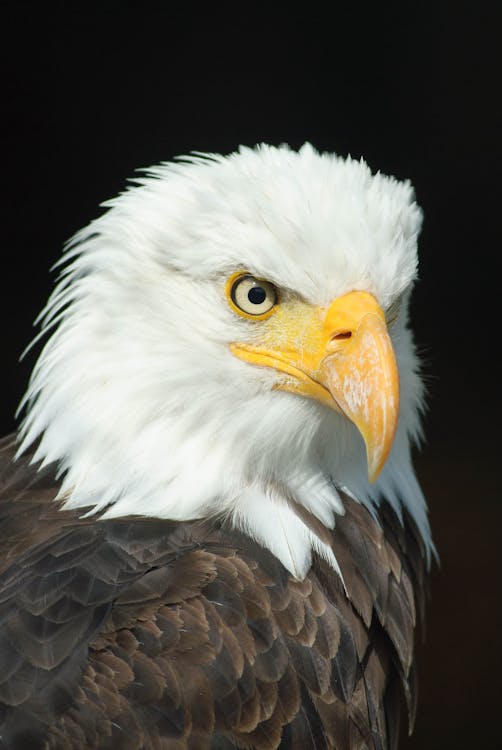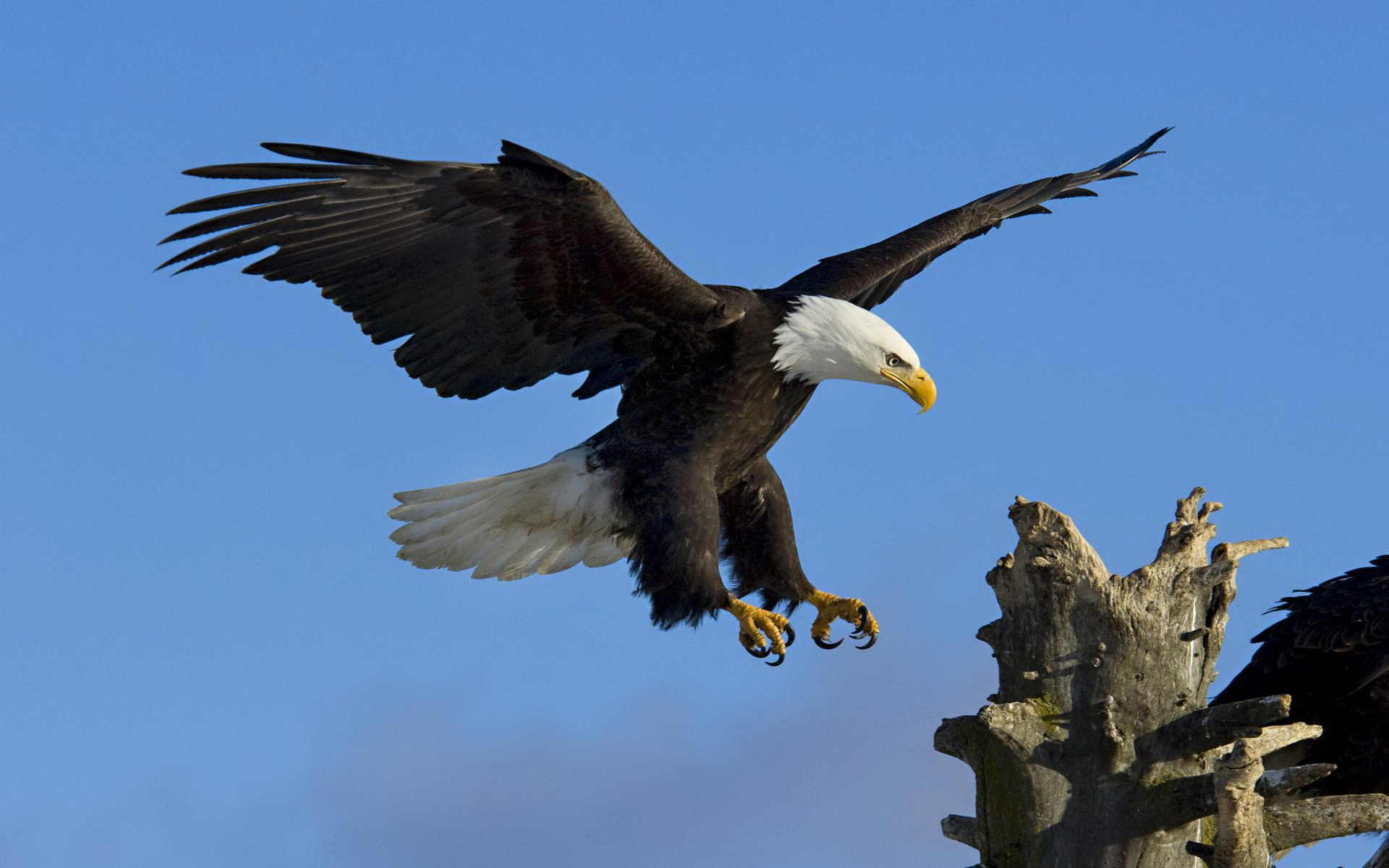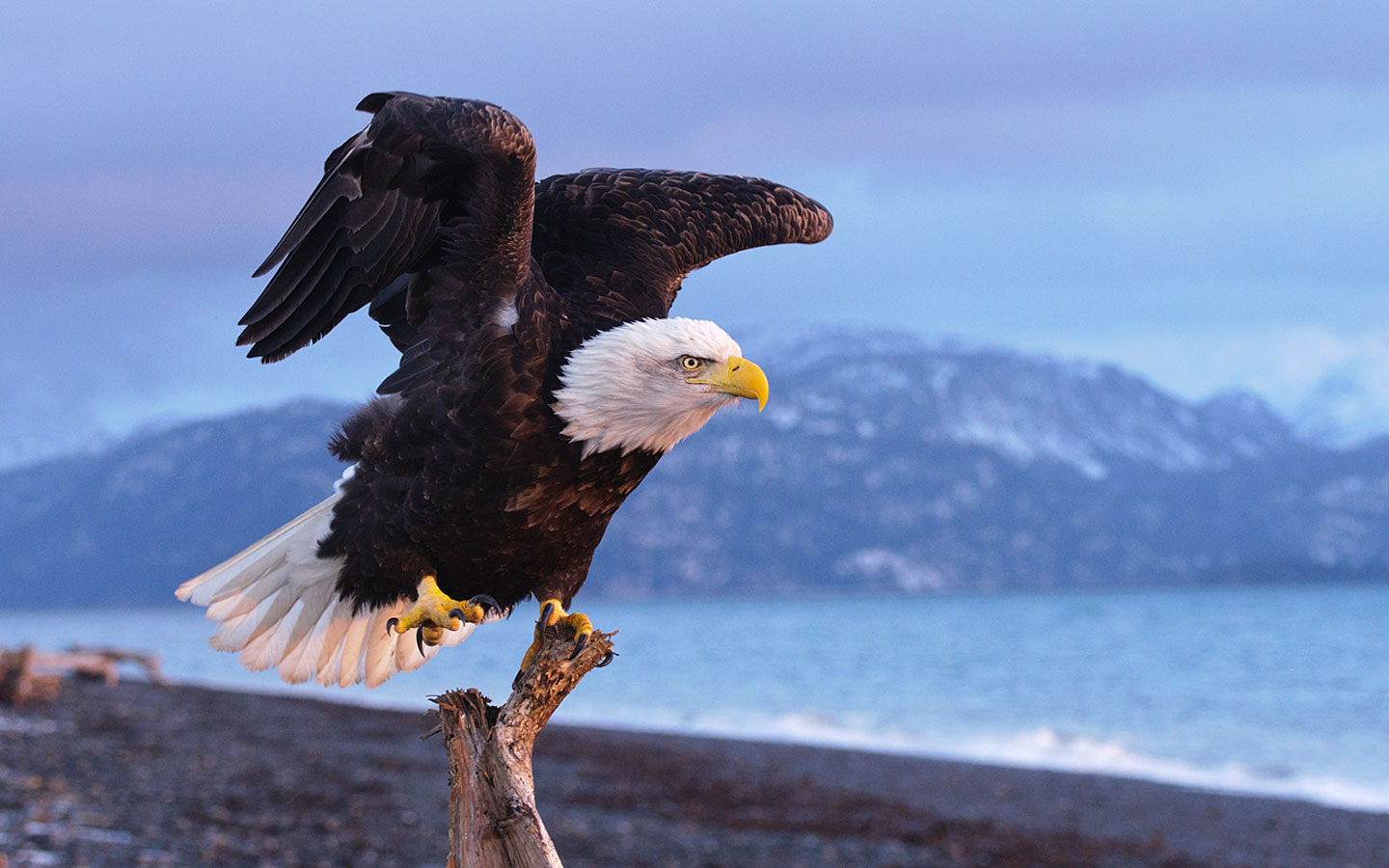
The Bald Eagle, known scientifically as Haliaeetus leucocephalus, is more than just a bird; it is a symbol of freedom and strength. This magnificent raptor is easily recognizable by its striking white head and tail contrasting with its dark brown body and wings. Despite its name, the Bald Eagle is not bald; the term comes from an old English word, “balde,” meaning white.
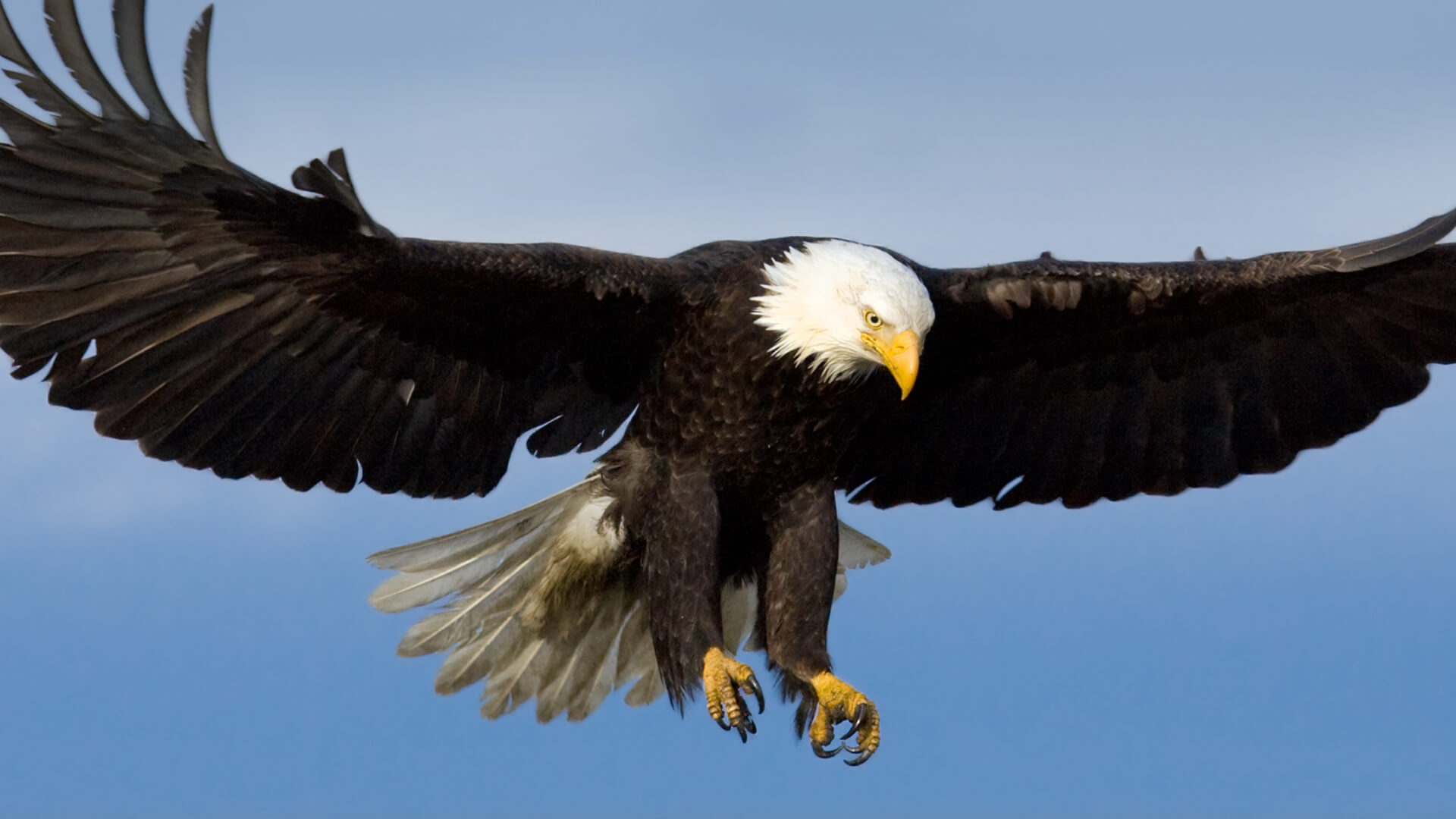
Native to North America, Bald Eagles are found near large bodies of open water with abundant food supply and old-growth trees for nesting. They primarily feed on fish, making their homes along rivers, lakes, and coastal regions. Their incredible vision allows them to spot prey from high above, diving at speeds of up to 100 miles per hour to capture their meal.
The Bald Eagle’s impressive wingspan, reaching up to 8 feet, allows for soaring flight with minimal effort. These birds can live up to 30 years in the wild, showcasing resilience and adaptability. They mate for life, returning to the same nest year after year, adding new layers until the nest can reach the size of a small car.

In the late 20th century, Bald Eagles faced the threat of extinction due to habitat destruction, hunting, and pollution, particularly from DDT pesticides. However, thanks to concerted conservation efforts, including the banning of DDT and legal protection under the Bald and Golden Eagle Protection Act, their populations have rebounded significantly.
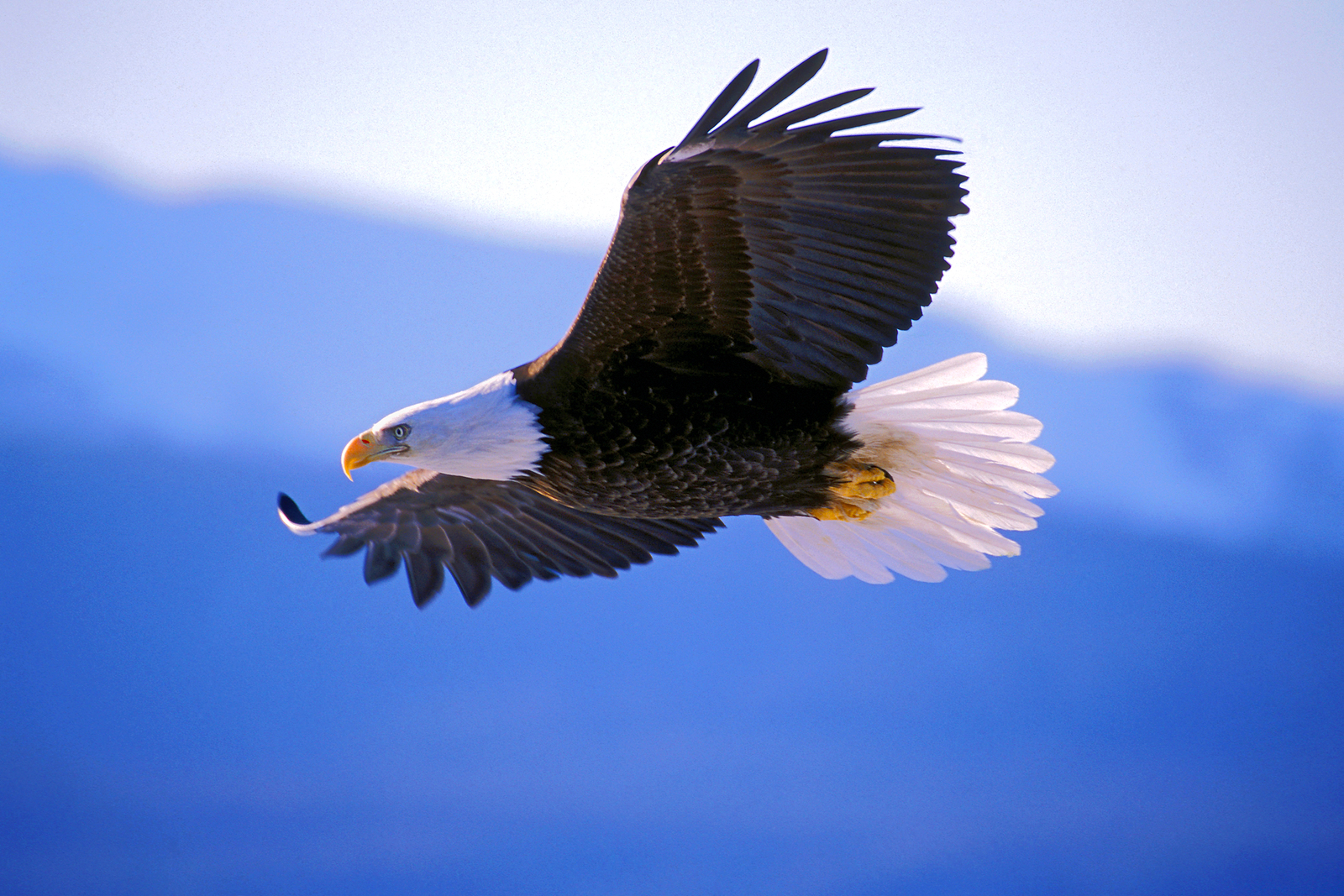
Today, the Bald Eagle stands not only as the national bird of the United States but also as a testament to the success of wildlife conservation. It inspires awe and reverence, reminding us of the importance of protecting our natural world.

